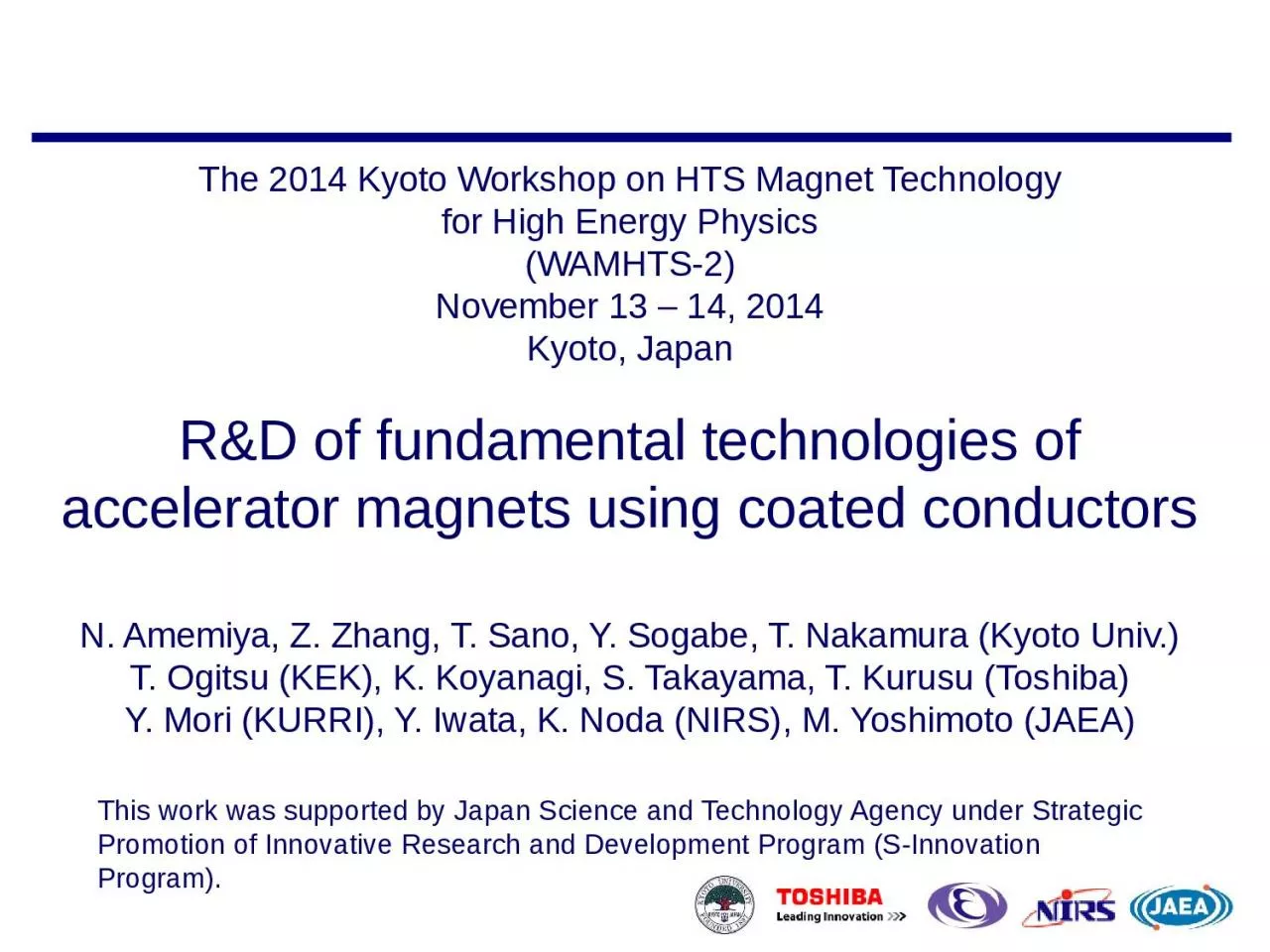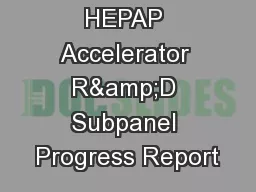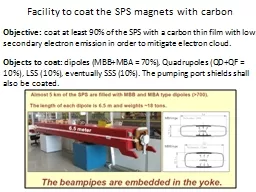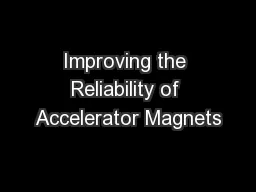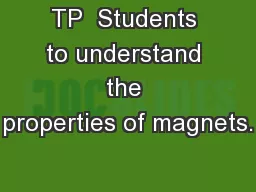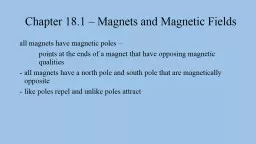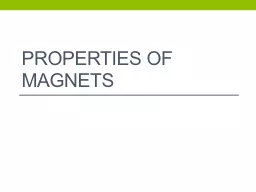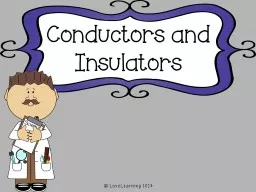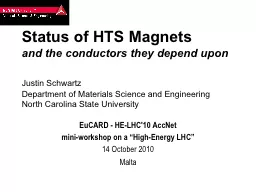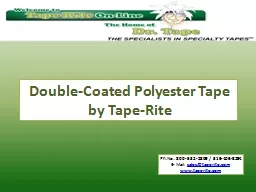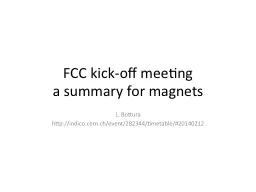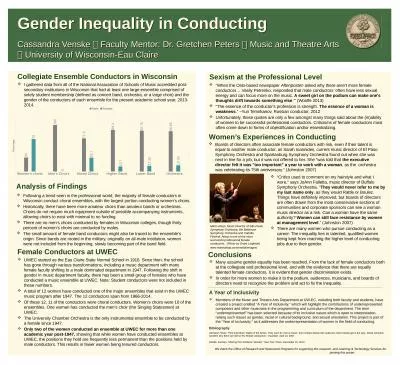PPT-R&D of fundamental technologies of accelerator magnets using coated conductors
Author : caroline | Published Date : 2022-06-11
N Amemiya Z Zhang T Sano Y Sogabe T Nakamura Kyoto Univ T Ogitsu KEK K Koyanagi S Takayama T Kurusu Toshiba Y Mori KURRI Y Iwata K Noda NIRS M Yoshimoto
Presentation Embed Code
Download Presentation
Download Presentation The PPT/PDF document "R&D of fundamental technologies of a..." is the property of its rightful owner. Permission is granted to download and print the materials on this website for personal, non-commercial use only, and to display it on your personal computer provided you do not modify the materials and that you retain all copyright notices contained in the materials. By downloading content from our website, you accept the terms of this agreement.
R&D of fundamental technologies of accelerator magnets using coated conductors: Transcript
Download Rules Of Document
"R&D of fundamental technologies of accelerator magnets using coated conductors"The content belongs to its owner. You may download and print it for personal use, without modification, and keep all copyright notices. By downloading, you agree to these terms.
Related Documents

